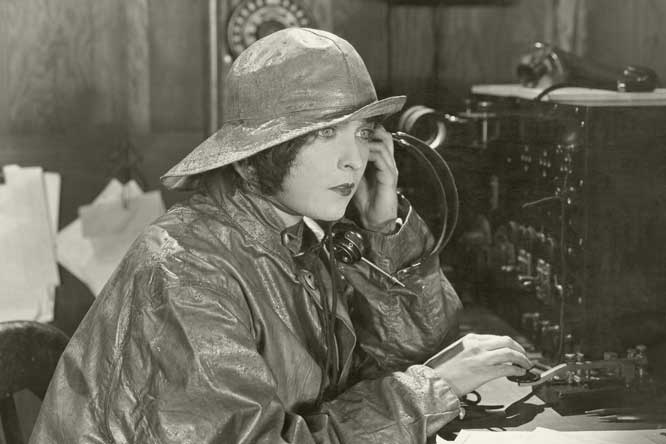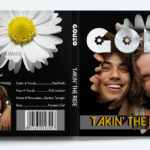What is a Landing Page?

IF NOBODY UNDERSTANDS YOU, YOU MIGHT BE A LANDING PAGE!
It’s just one page, but oh, what a page! An art form and a science have risen from the need for effective landing pages. Why? Because done right, they can act as a cash cow—and they practically run themselves.
Not to be confused with the home page, which functions as the central hub of a website, the landing page is somewhat misunderstood, a lone wolf. Self-contained and self-reliant, the landing page exists for a sole purpose, clearly defined from the outset, and targeted as such in search engine results.
The components of a landing page are:
- Headers
- Hero shot
- Narrative
- Social proof
- Reinforcing statements
- Call to action
These components all exist within the one page, and often in a very specific order. You may be thinking that this can make for a very long page, and you might even wonder if web visitors, so often pigeon-holed as “non-readers,” would ever get to the bottom of such a page. But this is where the science of landing pages really shines. The strategy that good landing pages employ will ensure that visitors can and do reliably reach the bottom of the page. Once there, these visitors are calculatedly likely to take you up on your offer.
Want to learn why landing pages are so effective, and how you can put them to use as a part of your digital marketing strategy? We’d love to show you!
STICKY POWER
Landing pages take advantage of a combination to proven strategies and approaches to draw readers down the page, while deepening their commitment to your product or service.
Headers are key questions that tightly articulate the pain point of the visitor, and hint at a solution.
Hero shots tell a visual story upfront that can, without words, confirm the words that follow, prove your point, make your story relatable, and create a cliff-hanger question, the answer to which lies at the other side of the purchasing event.
The narrative weaves the story further with words. It can be a testimonial, a creation myth, a success story, and more. It provides those meaningful details that convince the reader that you once shared their plight, that others have, too, and that it’s perfectly reasonable for them to have been frustrated, suffering, embarrassed, or whatever painful result they likely have experienced, dealing with their problem in the world they have known thus far. Simultaneously, the narrative shows the reader who you are today: a person who is no longer suffering, who has compassion for those who still do, who has done the homework to alleviate this problem, and is now back with results to share.
Social proof drives your point home. You are not the only one who’s achieved success or pain relief using this new method, product, or service. Here are five others who were so grateful that they came back to you to evangelize.
Reinforcing statements subtly simplify and underscore the most important points in the story: the pain, the proof, the relief to come.
And finally, the call to action comes. It comes as, believe it or not, a great frustration. The reader has to this point been eagerly delaying gratification to get to the reward at the end. It was a long read, and maybe a long video to watch, as well, and the end was supposed to bring relief, but instead, it brings a bid to pay money for the answer–your product or service. Still, they can’t say they didn’t see it coming. And so, if you have come in at the right price point, and if your call to action also includes some kind of guarantee, your reader will not want to have sunk all that time and emotion into it for nothing, and that is when your landing page converts the reader into a buyer.
Okay, so now we know what to include in a landing page, and even why, but how do we design such a page?
A LANDING PAGE IS LIKE A SONNET
The bard might disagree, but like a sonnet, a landing page is tight in construction, focused, and kinda long…
Despite its length, building a great landing page can be fairly fast—after all, it’s just one page, right? But planning it effectively can require some thought, and yes, design.
Your goals with a landing page are specific, so we will go over each of them and plan how to address each piece to best achieve results for your particular offering.
Designing and planning a landing page can be one of the most rewarding projects you take on in web marketing, because they are at once highly structured and highly creative—and they can get amazing results for the right offering.
KNOW YOUR LIMITS, PUSH THEM WHERE APPROPRIATE
The art of great design is at least partly in understanding the major constraints that exist, and why they exist. To create a great landing page that grabs, holds, and then converts your visitors, you have to follow some pretty strict rules, but once you understand them, there’s plenty of room for creativity.
And you must strive to push the rules. Why? Because we live in a sales-weary world. People are tired, overcrowded, over-stimulated, and under-appreciated. If you want to reach them, you have to understand this experience and show them your wouldn’t waste their time mugging them with yet another scam. Be decent and have something of value to offer and you are 80% there. The rest is in designing a page that at once achieves all of the goals of a landing page and offers the reader some kind of consolation for going along and being a good sport. You can make it fun, weird, calming, or even disarming, but the goal of great design is to make it worthwhile. So pick a way to do that, and then be consistent. Ask yourself over and over as you work through your design: “if I was the beleaguered visitor, what would perk me up about now? What would make this experience rock? You have but to truly take their perspective and the answers will come.
Once you’ve completed the design, and written and developed the content, edit like crazy. Your goal is definitely to have a long page, but each new sight or sentence has to also act as a page turner, so cut out everything that fails this test.

GROUND CONTROL TO MAJOR ROI
Of all the digital marketing tools you might use, landing pages are among the easiest to calculate your ROI for.
For starters, it’s just one page, so your analytics tools will easily be able to aggregate data for that page.
Then, too, a good landing page is highly focused, so it acts as a funnel, pulling in specific visitors looking to solve a specific problem. This means not only can you look at your results for targeted keywords, but you will be getting a concentration of qualified buyers coming to a landing page if you’ve set it up right.
As long as your offering promises a definite segment of buyers a solution to a definite problem experienced by that segment, and your price is sensitive to their level of pain, your correctly-constructed landing page will act as a funnel for returns.
CRAFT SMOOTHLY TO GROUND
Once you’ve “landed” a customer, use all of your business best practices and knowledge to retain them and treat them right. The landing page is a great beginning to a beautiful new relationship, but carry through and deliver substance. Landing sites that “skim the cream,” taking people’s money and delivering only weakly on promises, are short-lived, and duly earn a poor reputation for their owners.
Put your name on your brand, sell it with commitment, and then stand by it.
What is a Landing Page?

IF NOBODY UNDERSTANDS YOU, YOU MIGHT BE A LANDING PAGE!
It’s just one page, but oh, what a page! An art form and a science have risen from the need for effective landing pages. Why? Because done right, they can act as a cash cow—and they practically run themselves.
Not to be confused with the home page, which functions as the central hub of a website, the landing page is somewhat misunderstood, a lone wolf. Self-contained and self-reliant, the landing page exists for a sole purpose, clearly defined from the outset, and targeted as such in search engine results.
The components of a landing page are:
- Headers
- Hero shot
- Narrative
- Social proof
- Reinforcing statements
- Call to action
These components all exist within the one page, and often in a very specific order. You may be thinking that this can make for a very long page, and you might even wonder if web visitors, so often pigeon-holed as “non-readers,” would ever get to the bottom of such a page. But this is where the science of landing pages really shines. The strategy that good landing pages employ will ensure that visitors can and do reliably reach the bottom of the page. Once there, these visitors are calculatedly likely to take you up on your offer.
Want to learn why landing pages are so effective, and how you can put them to use as a part of your digital marketing strategy? We’d love to show you!
STICKY POWER
Landing pages take advantage of a combination to proven strategies and approaches to draw readers down the page, while deepening their commitment to your product or service.
Headers are key questions that tightly articulate the pain point of the visitor, and hint at a solution.
Hero shots tell a visual story upfront that can, without words, confirm the words that follow, prove your point, make your story relatable, and create a cliff-hanger question, the answer to which lies at the other side of the purchasing event.
The narrative weaves the story further with words. It can be a testimonial, a creation myth, a success story, and more. It provides those meaningful details that convince the reader that you once shared their plight, that others have, too, and that it’s perfectly reasonable for them to have been frustrated, suffering, embarrassed, or whatever painful result they likely have experienced, dealing with their problem in the world they have known thus far. Simultaneously, the narrative shows the reader who you are today: a person who is no longer suffering, who has compassion for those who still do, who has done the homework to alleviate this problem, and is now back with results to share.
Social proof drives your point home. You are not the only one who’s achieved success or pain relief using this new method, product, or service. Here are five others who were so grateful that they came back to you to evangelize.
Reinforcing statements subtly simplify and underscore the most important points in the story: the pain, the proof, the relief to come.
And finally, the call to action comes. It comes as, believe it or not, a great frustration. The reader has to this point been eagerly delaying gratification to get to the reward at the end. It was a long read, and maybe a long video to watch, as well, and the end was supposed to bring relief, but instead, it brings a bid to pay money for the answer–your product or service. Still, they can’t say they didn’t see it coming. And so, if you have come in at the right price point, and if your call to action also includes some kind of guarantee, your reader will not want to have sunk all that time and emotion into it for nothing, and that is when your landing page converts the reader into a buyer.
Okay, so now we know what to include in a landing page, and even why, but how do we design such a page?
A LANDING PAGE IS LIKE A SONNET
The bard might disagree, but like a sonnet, a landing page is tight in construction, focused, and kinda long…
Despite its length, building a great landing page can be fairly fast—after all, it’s just one page, right? But planning it effectively can require some thought, and yes, design.
Your goals with a landing page are specific, so we will go over each of them and plan how to address each piece to best achieve results for your particular offering.
Designing and planning a landing page can be one of the most rewarding projects you take on in web marketing, because they are at once highly structured and highly creative—and they can get amazing results for the right offering.
KNOW YOUR LIMITS, PUSH THEM WHERE APPROPRIATE
The art of great design is at least partly in understanding the major constraints that exist, and why they exist. To create a great landing page that grabs, holds, and then converts your visitors, you have to follow some pretty strict rules, but once you understand them, there’s plenty of room for creativity.
And you must strive to push the rules. Why? Because we live in a sales-weary world. People are tired, overcrowded, over-stimulated, and under-appreciated. If you want to reach them, you have to understand this experience and show them your wouldn’t waste their time mugging them with yet another scam. Be decent and have something of value to offer and you are 80% there. The rest is in designing a page that at once achieves all of the goals of a landing page and offers the reader some kind of consolation for going along and being a good sport. You can make it fun, weird, calming, or even disarming, but the goal of great design is to make it worthwhile. So pick a way to do that, and then be consistent. Ask yourself over and over as you work through your design: “if I was the beleaguered visitor, what would perk me up about now? What would make this experience rock? You have but to truly take their perspective and the answers will come.
Once you’ve completed the design, and written and developed the content, edit like crazy. Your goal is definitely to have a long page, but each new sight or sentence has to also act as a page turner, so cut out everything that fails this test.

GROUND CONTROL TO MAJOR ROI
Of all the digital marketing tools you might use, landing pages are among the easiest to calculate your ROI for.
For starters, it’s just one page, so your analytics tools will easily be able to aggregate data for that page.
Then, too, a good landing page is highly focused, so it acts as a funnel, pulling in specific visitors looking to solve a specific problem. This means not only can you look at your results for targeted keywords, but you will be getting a concentration of qualified buyers coming to a landing page if you’ve set it up right.
As long as your offering promises a definite segment of buyers a solution to a definite problem experienced by that segment, and your price is sensitive to their level of pain, your correctly-constructed landing page will act as a funnel for returns.
CRAFT SMOOTHLY TO GROUND
Once you’ve “landed” a customer, use all of your business best practices and knowledge to retain them and treat them right. The landing page is a great beginning to a beautiful new relationship, but carry through and deliver substance. Landing sites that “skim the cream,” taking people’s money and delivering only weakly on promises, are short-lived, and duly earn a poor reputation for their owners.
Put your name on your brand, sell it with commitment, and then stand by it.




